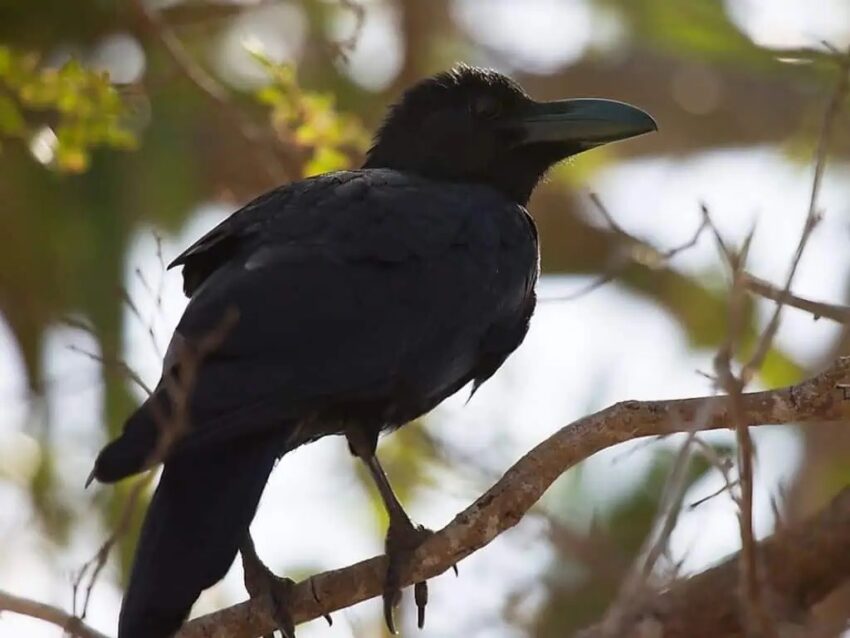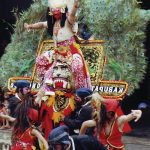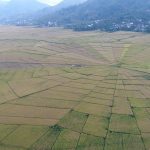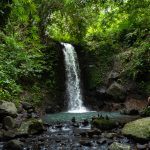The Indonesian island of Flores is a true paradise for birdwatchers. With over 300 recorded bird species, including dozens of endemics found nowhere else on Earth, Flores provides endless opportunities to observe incredible avian diversity. As an island that remained isolated for millions of years, Flores evolved its own unique flora and fauna, creating a one-of-a-kind ecosystem.
A Land Lost in Time
Stepping foot on Flores feels like traveling back in time. The island has remained largely undeveloped, with small traditional villages dotting the landscape. Verdant rainforests cloak the volcanic mountains that run like a spine down the center of the island. Mangrove forests fringe the coasts, while savanna grasslands spread across the lowlands.
This diversity of habitats supports a spectacular variety of birds, many of which are relics of ancient lineages. Due to Flores’ long isolation, bird families evolved into unique endemic species found only on this island. When exploring the forests and coasts of Flores, you’ll feel as if you’ve stepped into a natural history documentary showcasing birds long vanished from the rest of the world.
Exploring Flores’ Endemic Avifauna
The crown jewels for birding on Flores are the numerous endemic species that occur nowhere else on Earth. These Flores specialties include:
Flores Monarch: This striking black-and-white monarch flycatcher inhabits forest patches across the island. Its piercing whistles echo through the trees.
Flores Crow: One of the world’s rarest corvids, this intelligent all-black crow survives only on Flores. Its loud, ringing calls reveal its presence.
Flores Green Pigeon: Shimmering green and purple, this gorgeous pigeon forages in fruiting trees across the island. Its deep, resonant coos are a familiar sound in the forests.
Flores Scopes Owl: This rarely seen reddish-brown owl emerges at dusk to utter its piercing whistles. Finding this Flores specialty takes patience and persistence Flores Hawk-Eagle: This fierce raptor soars over the forests hunting for prey. Its loud, descending calls often give away its presence.
Flores Minivet: The vivid red, black and white males of this songbird species stand out against the forest greenery. Their chattering calls ring through the canopy.
These are just a few of the endemic highlights.
A more comprehensive list of birds on Flores: Green Junglefowl, Orange-footed Scrubfowl, Flores Hawk-Eagle, Wallace’s Hanging Parrot, Leaf (Rainbow) Lorikeet, Dark-backed Imperial Pigeon, Black-backed Fruit Dove, Barred Cuckoo Dove, Parzudaki’s (Ruddy) Cuckoo Dove, Black-naped Fruit Dove, Flores Green Pigeon, Flores Scops Owl, Wallace’s Scops Owl, Moluccan Scops Owl, White-rumped Kingfisher, Cerulean Kingfisher, Stork-billed Kingfisher, Elegant Pitta, Flores Minivet, Tenggara (Glossy) Swiftlet, Flores Crow, Flores Monarch, Flores Warbling-flycatcher (Russet-backed Jungle-Flycatcher), Trumpeting (Brown-capped) Fantail, Bare-throated Whistler, Chestnut-capped Thrush, Chestnut-backed Thrush, Flores (White-browed) Shortwing, Pygmy Cupwing (Wren Babbler), Russet-capped Tesia, Flores Leaf-Warbler, Scaly-crowned Honeyeater, Wallace’s Heleia (Yellow-spectacled White-eye), Eyebrowed Heleia (Yellow-browed Dark-eye), Thick-billed Heleia (Dark-eye), Crested Heleia (Dark-eye), Golden-rumped Flowerpecker, Black-fronted Flowerpecker, Flores (Blood-breasted) Flowerpecker, Flame-breasted Sunbird, Flores Spangled (Wallacean) Drongo, Pale-shouldered Cicadabird, Wallacean Cuckooshrike, Pale-headed Munia, Five-coloured Munia, Timor Zebra Finch.
Exploring the island also turns up Wallace’s Hanging Parrot, Elegant Pitta, Chestnut-backed Thrush, Bare-throated Whistler, and many other Flores specialties. Discovering these birds found nowhere else is a true privilege.

Birding the Diverse Habitats of Flores
In addition to its endemics, Flores hosts a diversity of habitat-specific birds across its varied ecosystems:
Mangrove Forests: Kingfishers, herons, and shorebirds thrive in Flores’ mangroves. Scan the muddy banks for White-collared Kingfisher, Javan Pond Heron, and Beach Thick-knee. The mangroves around Labuan Bajo offer some of the island’s best coastal birding.
Lowland Rainforests: Fruit doves, woodpeckers, and leafbirds inhabit the lush lowland forests. Listen for Black-naped Fruit Dove, Sunda Pygmy Woodpecker, and Golden-bellied Gerygone. Puarlolo and areas near Ruteng provide birdy rainforest patches.
Montane Forests: Higher elevation forests cloak the island’s volcanoes. Search the mossy branches for montane specialties like Chestnut-capped Thrush, Island Thrush, and Flores Leaf Warbler. Mount Ranaka and Mount Kelimutu host the island’s most diverse mountain forests.
Savanna Grasslands: Open grassy areas harbor finches, pipits, and scaly-breasted munias. Watch for Zebra Finch, Australasian Pipit, and Five-colored Munia around Ruteng and Bajawa.
This habitat diversity ensures constantly changing bird communities as you explore the island. You may spot over 100 species in a single day!
When to Go for the Best Birding
The cooler dry season from July to October provides ideal birding conditions on Flores. Many migrant shorebirds and raptors pass through Flores during this time. Resident birds are active nesting and easier to observe.
April and May sees the end of the wet season. Flores is lush and green, but heavy rain can hamper birding. From November to March, resident birds are less vocal and active during hot, humid weather. However, some keen birders specifically target the wet season to search for Wallace’s Standardwing and other rare mountain birds.
No matter when you visit, Flores offers world-class birding. The key is allowing enough time to explore multiple habitats across the island. A minimum of 10-14 days provides sufficient time, though a month on Flores would keep any birder satisfied!
Top Birding Sites on Flores
With so many excellent birding sites on Flores, it helps to prioritize the top locations:
– Komodo National Park – Home to the famous Komodo Dragons, this park also offers pristine coastal and dry forest birding.
– Kelimutu National Park – The beautiful colored lakes of Mount Kelimutu provide access to montane forest birding.
– Puarlolo – Lowland and foothill rainforest patches near Labuan Bajo support numerous Flores endemics.
– Mount Ranaka – Bird the montane forests of this peak outside Ruteng for high elevation specialties.
– Kisol – Explore lowland rainforests near this village for the best chance at seeing Flores Crow.
– Golo Lusang – A mountain pass with excellent foothill forest birding south of Ruteng.
– Danau Rana Mese – A small lake surrounded by lush forest with many Flores specialties.
– Pagal Forest – Degraded but birdy lowland forest patches north of Ruteng hold specialties like Flores Hawk-Eagle.
With so many excellent sites, Flores truly offers a lifetime of birding in one small island!
Responsible Birding on Flores
When birding on Flores, be sure to follow responsible birding practices:
– Walk slowly and quietly to minimize disturbance. Avoid using playback excessively.
– Support local communities by hiring local guides and staying in village homestays when possible.
– Avoid trails and areas closed for restoration or cultural reasons. Respect all protected areas.
– Contribute to conservation by donating to groups like BirdLife International who protect IBAs on Flores.
Following these guidelines helps ensure the survival of Flores’ unique birds while benefiting local people. With responsible birding, the avian wonders of Flores will endure for future generations.
Conclusion
For birders, Flores is a lost world brought to life. Its rich endemic avifauna, isolated for eons on this island, offers a glimpse back in time to species long vanished elsewhere. Exploring the island’s varied ecosystems unveils new discoveries around every corner. As one of the world’s top birding destinations, Flores epitomizes the wonders of Indonesian birding at its finest. If you have the chance to visit, seize the opportunity to experience the marvels of birding on Flores!




